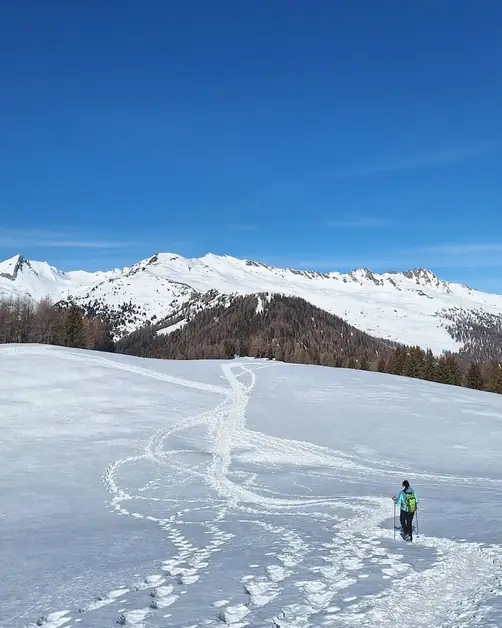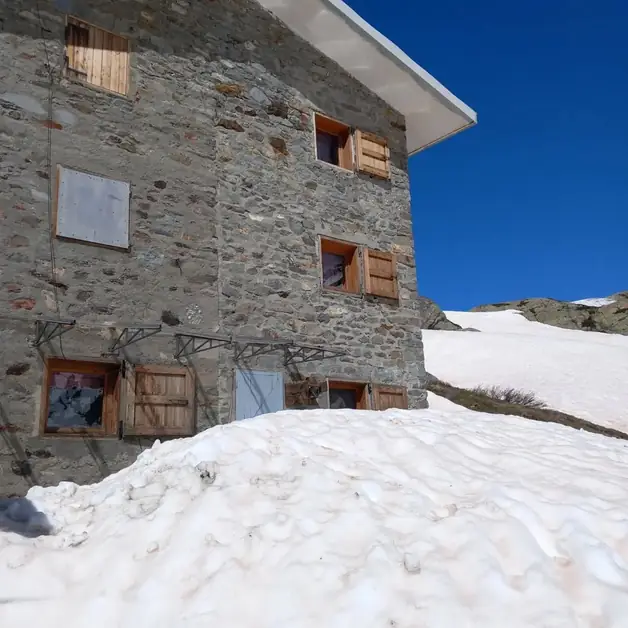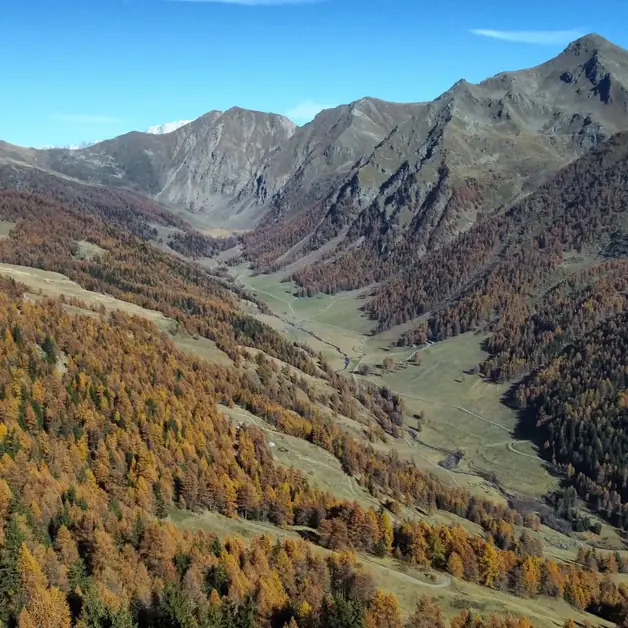Explore the magical descent from Court de Bard
Discover the beauty of the descent from Court de Bard to Col de Bard.

Where is Court de Bard and why is it a must-see destination for mountain lovers?
Court de Bard is located in the Aosta Valley, in an extraordinary natural setting. This area is still little known to tourists but is highly appreciated by hikers and ski mountaineering enthusiasts. Nestled between snowy slopes and panoramic ridges, Court de Bard represents an ideal starting point for those who want to immerse themselves in the alpine nature for a day.
What is the descent like from Court de Bard to Col de Bard?
The descent from Court de Bard to Col de Bard is one of the most exciting moments of the hike. The terrain features beautifully compact snow, perfect for descending safely and enjoying the view without excessive difficulties. The environment is majestic: as you descend, the view opens up to the Rochefort Group, the Grandes Jorasses, and the Grande Rochère. This natural spectacle makes the experience unforgettable.
Which mountains can be seen during the descent from Col de Bard?
During the descent, you can admire some of the most iconic peaks of the Mont Blanc massif. The Grandes Jorasses dominate the horizon with their grandeur, followed by the Rochefort Group and the Grande Rochère, a majestic mountain that stands out for its imposing shape. Every glance to the north offers a different, always spectacular perspective of the snow-covered peaks.
Is the route suitable for those who are not experienced in ski mountaineering?
Yes, but with some clarifications. The descent from Court de Bard to Col de Bard does not present extreme passages; however, it requires good physical preparation and familiarity with the mountain environment. In winter, the compact snow facilitates progression, but it is important to be equipped with suitable gear: crampons, poles, and technical clothing. Those without experience can be accompanied by a local mountain guide.
What is the best time to tackle the descent to Col de Bard?
The ideal period is winter, from December to March, when the snow is more stable and compact. During these weeks, the landscape is completely white, and the views become sharper. However, spring also offers beautiful days, with milder temperatures and snow that tends to soften during the central hours of the day.
How long does the hike take and what is the difficulty?
The complete itinerary can take between 4 to 6 hours depending on the pace and snow conditions. The elevation gain is not extreme, but the presence of ridge sections requires attention. The ascent and descent alternate in a varied and never monotonous route. After Col de Bard, the ridge continues to rise northward, passing by Punta Fetita, Testa dei Frà, and Testa di Serena.
What kind of view can be enjoyed from the ridge of Col de Bard?
From the ridge, a vast panorama opens up. Looking west, you can clearly distinguish the Grandes Jorasses, the Rochefort Group, and the peaks of Mont Blanc. To the east, however, you can see the hills that delimit the Gressoney valley and the Monte Rosa group. The atmosphere, especially on clear days, is breathtakingly beautiful.
Why do many hikers want to return to the ridge of Court de Bard?
Those who walk this ridge once often wish to return. The combination of compact snow, the silence of the mountain, and the view of some of the most famous peaks in the Alps makes the experience unique. Furthermore, the part that continues towards Testa dei Frà and Testa di Serena invites further exploration of the area. Mountain lovers know that each visit offers different glimpses and new emotions.
How do you reach the starting point for Court de Bard?
The starting point is accessible by car from Aosta or Morgex, following the signs for the villages in the Bard and Valgrisenche area. The roads are generally clear even in winter, but it is advisable to have chains or winter tires with you. Alternatively, it is possible to reach the nearest locality by public transport and then continue on foot or with a transfer.
Are there shelters or resting points along the route?
Along the way, there are no shelters open all year round, but at certain times it is possible to find small huts or resting points used by hikers. It is advisable to bring food and hot drinks with you. During the winter season, the days are shorter, so it is important to plan well to complete the route in daylight.
Is it possible to continue to Punta Fetita and Testa dei Frà?
Yes, those who still have energy and want to continue the hike can proceed along the ridge to Punta Fetita and Testa dei Frà. The trail becomes more challenging but offers even broader views towards the Mont Blanc chain and the Gran Paradiso mountains. This area deserves more than one visit, especially for those who love exploring new peaks.
What practical tips are there for safely tackling the descent?
Before setting off, it is important to check the snow report for the Aosta Valley and verify the snow conditions. It is better to leave early in the morning when the snow is still compact. Always carry a map or GPS, layered technical clothing, and sunglasses. Even if the route is not particularly risky, caution in the mountains is always essential.

